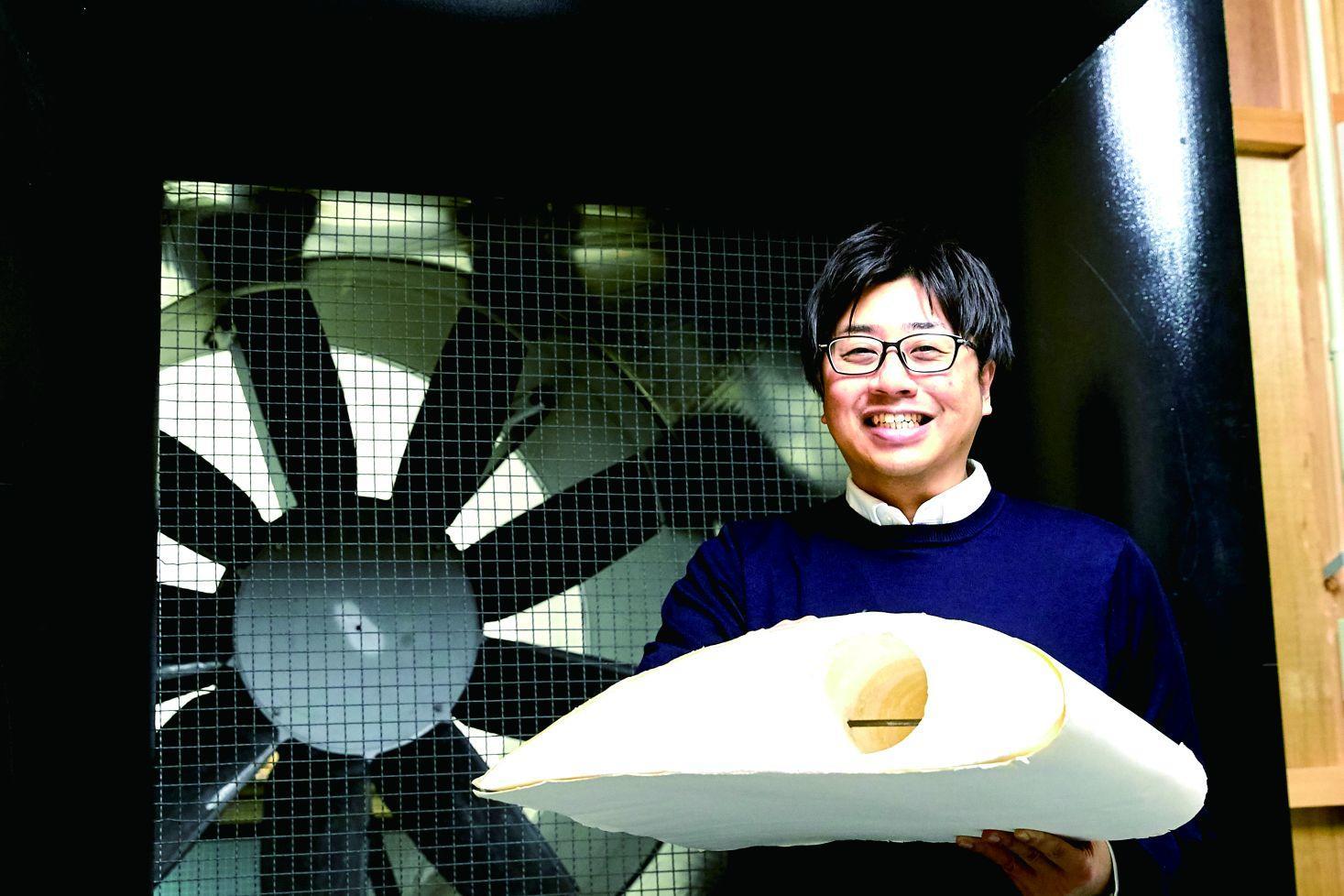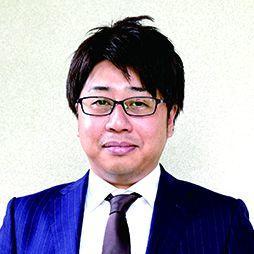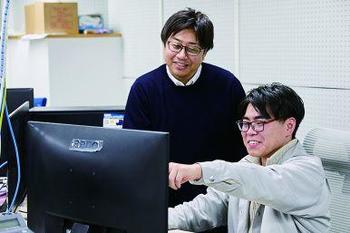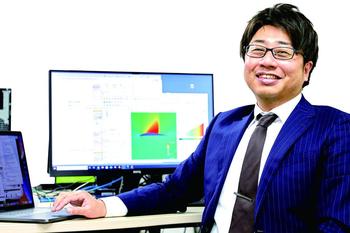- TOP
- Cutting-edge Research and Social Contribution
- Cutting-edge Research
- Establishing highly-reliable techniques for analyzing ultra-high-speed flow, essential for next-generation space development

Establishing highly-reliable techniques for analyzing ultra-high-speed flow, essential for next-generation space development

OGINO Yousuke
- Specialized field
Aerospace Engineering, Hypersonic and Plasma Flows, Numerical Evaluation of Aerodynamic Characteristics
Atmospheric entry: a period of extreme non-equilibrium conditions where multiple physical reactions occur simultaneously
Multiple physical processes occur simultaneously around a capsule during atmospheric entry, resulting in a non-equilibrium state. A balanced state, on the other hand, is said to be in "equilibrium," and sciences like foundational thermodynamics and fluid dynamics have been systematized under the assumption that nitrogen and oxygen molecules in the air are in such an equilibrium state.
In the problem of atmospheric entry, where extreme high temperature and low density are present together, true non-equilibrium characteristics are important, and deriving the heating rate of the capsule requires a non-equilibrium model, not just a general physical calculation of an equilibrium state. The non-equilibrium models employed worldwide so far have calculated numerical values by averaging distributions of atomic and molecular energy modes, but there is room to improve analysis precision.
This approach is possible due to dramatic improvements in computation speed enabled by the technological development of computers. However, if you actually try to implement Dr. Ogino's idea, many of the parameters in the calculation program can't be completely determined, and if you try to find them one by one through calculation, in some cases it can take about 80 years to get a result... Thus, Dr. Ogino is trying to achieve dynamic correction based on results of experimental measurement of any parameters that can't be completely determined.
Striving to establish non-equilibrium models with higher precision
Dr. Ogino has already developed an innovative calculation program incorporating multiple types of physics, including fluid dynamics, chemical reactions, quantum mechanics, and statistical mechanics. However, as noted above, some of the parameters used in the calculation program are uncertain. To verify the numeric values of these uncertain parameters, he plans to conduct wind tunnel tests* of ultra-high-speed air currents using an arc-heated wind tunnel capable of recreating the actual flight environment. This special wind tunnel is located at the Institute of Space and Astronautical Science and Chofu Aerospace Center of the Japan Aerospace Exploration Agency (JAXA).
The analysis precision and reliability of calculations in a non-equilibrium model can be further improved by experimentally deriving numeric values for parameters. Dr. Ogino has high expectations for these experiment results: "By realizing precision of experimental measurements and calculation results in a complementary manner, we can likely make substantial progress toward analysis techniques that enable accurate prediction of the flow around a capsule during atmospheric entry."
Precise analysis of the capsule's heating rate will allow for optimal use of heat-resistant material at specific design points, enabling a reduction in the weight of the existing heavy shielding material. This will open the door to loading more experimental equipment and crew onto rockets, and will also help to reduce launch costs.
The next step after completing a non-equilibrium model is creating a system that allows many people to use the results. Dr. Ogino: "I'm thinking, for example, of mapping heating and load for various cases of capsule flight patterns and paths and eventually publishing the results." A non-equilibrium fluid analysis technique that successfully integrates diverse physical processes without conflicts is vital for the upcoming phase of space development. There are high hopes for the establishment and widespread adoption of such a technique.
* Tests where air is streamed around a stationary model, simulating the state of flying through the atmosphere, and measurements are taken of forces acting on the model and the flow of air around it.
A theory of non-equilibrium flow, expected to have engineering applications in a wide range of fields
Non-equilibrium phenomena are not limited to atmospheric entry; they appear in various situations even in ordinary life. Plasma is one example. When heat and electric energy are applied to a gas, the gas molecules dissociate into atoms, and as the temperature rises, the electrons orbiting the atomic nuclei separate from atoms, resulting in a plasma--i.e., an extremely energetic state consisting of a mixture of neutral molecules, plasma ions, and negative ions.
As part of his exploration of ultra-high-speed air flow, Dr. Ogino is also involved in research on hypersonic passenger aircraft. These planes fly at Mach 6, allowing traversal of the Pacific Ocean from Japan to the US in 2.5 hours, and research is moving forward as an international project in collaboration with the US, Australia, UK, and other countries. Demonstration experiments employing unmanned flight are already being carried out, and since the vibrations when the plane gets into turbulence are greater than ordinary aircraft, a key point for practical use will be establishing technology to maintain stable flight even in turbulence.
Employing knowledge of math and physics, learned in high school and college, in a way that's interesting!?
Dr. Ogino first worked in his current aerospace-related research field as an undergraduate. In choosing a research theme for his senior graduation thesis, he ventured into the area of "atmospheric entry" because he thought the words sounded cool. In analyzing ultra-high-speed air flows around a capsule entering the atmosphere, he frequently applied knowledge of mathematics, physics, and chemistry that he learned in high school and university, and he says that was a lot of fun.

When asked about the special appeal of his research, Dr. Ogino replied that it was the "thrill of pioneering new ground that our great predecessors couldn't tread by using the latest knowledge and technology." Another interesting point, he says, is fully exploiting human intelligence, in the form of equations and experiments, to elucidate real-world physical phenomena like air flow around an airplane or capsule.
General laws allowing unified understanding of extremely complex non-equilibrium states have yet to be worked out. Dr. Ogino's research, which endeavors to intricately elucidate each element of complex phenomena through direct calculation, holds a captivating allure, perhaps stemming from the grandeur of "unraveling the mysteries of the cosmos and the world with human intelligence"--a sentiment Dr. Ogino personally considers the true charm of his work.
Date of posting: December, 2023/ Date of interview: March, 2022

